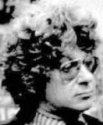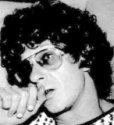NamUs #UP68367 / Doe Network 3428UMHI
Demographics
Sex: Male
Race/Ethnicity: White / Caucasian, Hispanic / Latino
Estimated Age Group: Adult - Pre 40 (News reports say pre-30)
Estimated Age Range (Years): N/A
Estimated Year of Death: 1981
Estimated PMI: N/A (News reports say up to 2 months)
Height: 5'10" (70 inches), Estimated
Weight: 160-170 lbs, Estimated
Cause of Death: Homicide by gunshot wound to the head
Circumstances
Type: Unidentified Deceased
Date Body Found: September 7, 1981
NamUs Case Created: April 21, 2020
ME/C QA Reviewed: N/A
Location Found: Wailuku, Hawaii
County: Maui County
Circumstances of Recovery: At around 12:30 p.m. on September 7, 1981, a family hiking on a ridge over the Iao Valley discovered mostly skeletal human remains near a trail to "The Cross" in Wailuku. The body was nude, and was found underneath a green plastic military-type poncho which had been used as a makeshift tent.
Due to the condition of the remains, authorities were not able to immediately determine whether the victim was male or female. They were, however, able to determine that the cause of death was a gunshot wound to the head. A handgun found near the body was believed to be the weapon used in the victim's death.
At the time of discovery, authorities did not believe foul play was involved in the victim's death, later determined to be a man. The investigation went cold for several years, until police received an anonymous tip in 1987 which led them to a man named Shannon Brown.
In 1992, prosecutors charged Shannon Brown, 29, with murder in the death of Wailuku John Doe. Brown was 18 at the time of the murder and was a sergeant in the Army when charges were filed. He was extradited from New York, where he was stationed at Fort Drum, back to Maui for trial and held on $50,000 bail. He pleaded not guilty and went to trial in July 1992, over a decade after John Doe's body was found. Brown never denied he shot the man, but claimed that he killed him during a struggle after the man tried to sexually assault him.
At trial, Deputy Prosecutor Joseph Barbaro told the jury that statements made by Brown and members of his family to police would show that Brown killed the man in a dispute over marijuana. When Brown's sister, Lynette, was interviewed by investigators in November 1987, she said that Brown confessed to her that he shot a man over Iao Valley before he left Hawaii to join the Army in December 1981. She also claimed that Brown told her he killed the man because he owed someone money and would have been killed had he not killed the man.
According to Barbaro, Brown's cousin, Stacey Borge, told police in an interview in 1988 that Brown took Borge up to the ridge in 1981 and asked Borge to help bury the man's body, but Borge said he declined. Barbaro also said that Borge told authorities Brown had confessed to shooting the man in the head.
The prosecution also said that when detectives interviewed Brown in 1987, he gave conflicting statements about the incident, althogh he told them that the man was killed in a dispute over marijuana.
Brown's attorney, Philip Lowenthal, told the jury that his client did not dispute that he shot and killed the man, but said that his client did so in self-defense. Lowenthal also said that both Brown's sister and cousin had been coerced into giving false statements when they were first questioned by police. When called to the witness stand, both Borge and Lynette Brown recanted their statements, telling the jury that they made up the story after police continued to pressure them into implicating Shannon Brown. Lowenthal also said the Brown lied to investigators about the murder when he was first interviewed because he was too embarrassed to admit the man tried to sexually assault him.
When Brown himself took the witness stand at trial, he told the jury that he met the man, described as a "loner" who hung around Iao Valley and was known only as "Ed," and went up to the ridge to smoke marijuana with him. Brown said that after they smoked, the man pulled out a handgun in a plastic bag and proceeded to take off his clothes. According to Brown, the man then told Brown "he wants my



."
Brown, believing the man was about to sexually assault him, began to struggle with the man, eventually gaining possession of the gun. Brown says he then shot the man in self-defense. In a moment of panic, according to Brown, he attempted to bury the body in a shallow depression on the ridge, removed the man's belongings, and fled.
After just three hours of deliberation, the jury acquitted Shannon Brown of murder in John Doe's death.
Inventory of Remains: N/A
Condition of Remains: Not recognizable - Near complete or complete skeleton
Physical Description
Hair Color: Brown
Head Hair Description: Shoulder length
Facial Hair Description: Possibly had a goatee
Eye Color: Unknown
Distinctive Physical Features: No information entered
Clothing and Accessories
- Green plastic military-type poncho erected like a tent (Near the Body)
- Handgun (Near the Body)
News Coverage
"Body Is Found," Honolulu Star-Bulletin, 8 September 1981, A3.
Police said a hiker found the body at about 12:30 p.m. near a trail leading to a white cross erected on the hills overlooking Wailuku.
Police said the body was in such a condition that they have been unable to determine its sex.
It appeared to be nude and was covered in a green plastic military type poncho, police said.
"Maui death still under probe," Honolulu Star-Advertiser, 9 September 1981, A8.
Maui police investigators said yesterday an autopsy performed on a body found Monday near Wailuku indicated the death was caused by a gunshot wound, but the death still is under investigation.
[...]
The body, described by investigators as "mostly skeletal remains," was found by a family hiking along a ridge above Iao Valley Monday morning. The body was under a poncho set up like a tent.
Police said a handgun was found near the body, and they indicated it was believed to be the weapon used in the death.
[Detective Capt. James] Lawrence said the autopsy indicated the death may have occurred up to two months before the body was found.
"We do not believe the death was due to foul play," Lawrence said. "But we are still are investigating."
"Shooting Case," Honolulu Star-Bulletin, 9 September 1981, A16.
An autopsy has shown that a person whose badly decomposed body was found in the Iao Valley area Sunday apparently was shot in the head.
"Remains Unidentified," Honolulu Star-Bulletin, 10 September 1981, A20.
The skeletal remains found Monday in Iao Valley have been determined to be that of a male under 30 years old but the victim's identity remains a mystery, Detective Capt. James Lawrence said today.
Edwin Tanji, "Slaying followed sex assault, defense says," Honolulu Advertiser, 21 July 1992, A4.
[Defense attorney Philip] Lowenthal said Brown never told anyone before of the sexual assault because he was too embarrassed to admit the situation. Brown was 18 when the incident occurred, he said.
In statements to police, Brown "said it was a fight over marijuana," Lowenthal said. "The business about being raped was not something he could ever tell anybody about."
[...]
The body was found by a family hiking on the ridge. [Deputy Prosecutor Joseph] Barbaro said the skeletal remains were under a green poncho and had not been clothed. The man was killed by a bullet to the head. A gun in a plastic bag, with one shot fired, was found at the scene.
[...]
When Brown was questioned by police in 1987, he gave two conflicting statements to police, Barbaro said. Barbaro also told the jury to expect Brown's sister, Lynette, to change the story she told to police.
Edwin Tanji, "Man says he lied when implicating kin in slaying," Honolulu Advertiser, 22 July 1992, A4.

A Haiku man said yesterday he lied to police in 1988 when he said his cousin asked him to help bury the body of a man shot to death on a ridge above Iao Valley.
[...]
"I lied. I told them (police) that because I was scared, so I lied to them," he said.
Reading portions of the statement, Deputy Prosecutor Joseph Barbaro said Borge told police that Brown took him up to the body in 1981 and asked Borge to help bury it.
Borge said he refused and didn't want anything to do with the body.
In the statement, Borge also told police that Brown said he shot the man in the head.
[...]
Investigator Glenn Padua, a Maul police detective in 1981, pointed to a hole in the skull found at the scene, saying it was a bullet hole.
Brown, now a sergeant in the Army, was pinpointed as a suspect in the death after police received an anonymous call in 1987 that led detectives to question members of Brown's family. Brown was indicted early this year.
Edwin Tanji, "Made up story, witness says," Honolulu Advertiser, 23 July 1992, A4.

The sister of a Haiku man charged with murder said yesterday she made up a story she told to police linking her brother to the shooting of a man whose decomposed body was found on a ridge above Iao Valley.
"I just pressured out being there and I told them I didn't know anything. And they kept pressuring me and pressuring me, so I just came out with my own story," said Lynette Brown.
[...]
Acting on a tip, police questioned Lynette Brown in November 1987. She gave detectives a statement in which she said her brother told her of shooting the man just before he left Hawaii to join the Army in December 1981.
She told police her brother told her he killed the man because someone else threatened him. She said Shannon told her he owed someone money and would have been killed if he hadn't killed the victim.
But testifying yesterday, she said she made up the statement to police.
"He never told me the whole story so I started making things up in my mind, just making it up," she said.
Edwin Tanji, "Man acquitted in 'self-defense' '81 killing," Honolulu Advertiser, 29 July 1992, A4.

A Haiku man who said he had been threatened with sexual assault was acquitted yesterday of murder in the shooting death of an unidentified man 11 years ago on a ridge above Iao Valley.
Shannon Brown, 29, "is very grateful to the jury and his family for their support," his lawyer, Philip Lowenthal, said.
[...]
Brown, now an Army sergeant, admitted shooting the victim, known only as "Ed," sometime before the skeletal remains were found in September 1991 [should be 1981]. Brown was 18 at the time of the shooting.
Taking the witness stand Monday, Brown said he had been smoking marijuana with the man, who he knew only as "a loner" who hung out around Iao Valley.
After they went to the remote ridge, Brown said, the man pulled out a gun in a plastic bag, removed his clothing and told Brown "he wants my 

 ."
."
During a struggle, Brown said he was able to get hold of the gun and fired a shot that struck the man in the head. Brown said he panicked, tried to bury the body in a shallow depression, took all of the man's belongings and fled.













